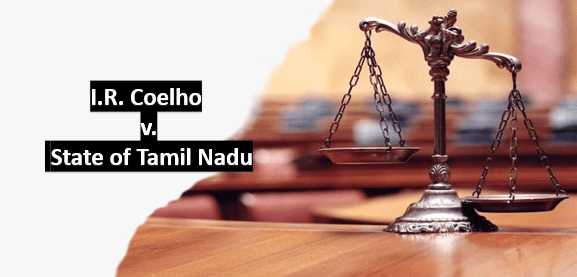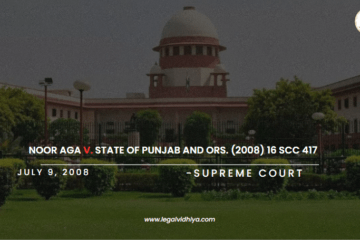
JARNAIL SINGH V. LACHHMI NARAIN GUPTA, 2018
| CITATION | 2018 SCC OnLine SC 1641 |
| DATE OF JUDGMENT | SEPTEMBER 26, 2018 |
| COURT | SUPREME COURT OF INDIA |
| CASE TYPE | SPECIAL LEAVE PETITION |
| PETITIONER | JARNAIL SINGH |
| RESPONDENT | LACHHMI NARAIN GUPTA |
| BENCH | DIPAK MISRA, KURIAN JOSEPH, R.F. NARIMAN, SANJAY KISHAN KAUL, INDU MALHOTRA |
| REFERRED | ARTICLE 16, ARTICLE 16(4), ARTICLE 14, ARTICLE 46, ARTICLE 341 AND ARTICLE 342 OF THE INDIAN CONSTITUTION |
KEYWORDS:
Reservation, scheduled caste(SC), scheduled tribes(ST), Indian Constitution, Article 16, creamy layer, M. Nagraj, Indra Sawhney
INTRODUCTION:
The case of Jarnail Singh v. Lachhmi Narain Gupta is popularly known as the ‘Reservation in promotions’ case. This case was decided by a 5 – Judge Bench of the Supreme Court of India in 2018 consisting of the then Chief Justice of India, Justice Dipak Misra. This case brought the controversial topic of reservations in limelight again. Reservations have been a topic of argumentation in the Indian subcontinent from many decades. Hence, the judgement in this cae was a matter of discussion in the field of law.
This case dealt with the Constitutional validity of the judgement pronounced in the case of M. Nagraj v. Union of India, 2006. The petition was filed by various State Governments and the Central Government contending that the decision in the impugned case made it difficult for them to grant reservations to various communities. Hence, this case dealt with the topic of reservation in promotions granted to Scheduled Caste and Scheduled tribes as well as the inclusion of creamy layer in granting reservation.
FACTS OF THE CASE:
The appeal in this case was filed in 2011 arising out of the judgement in Lachhmi Narain Gupta v. Jaranail Singh, decided by the Punjab & Haryana High Court, to review the judgement given by the Supreme Court in the case of M. Nagraj v. Union of India, 2006. The petitioners opined that the impugned judgement is unconstitutional since it contradicts the provisions laid down in the Indra Sawhney Case of 1992.
The impugned judgement of M. Nagraj case had dealt with the constitutional validity of 77th, 81st, 82nd and 85th constitutional amendment acts which gave the power to the government to create reservations for SC/ST in promotions as under Article 16 (4B). However, it also laid down the condition that before granting reservation in promotion, the state must collect quantifiable data showing the backwardness of the SC/ST communities and their inadequate representation along with valid grounds showing increase in administrative efficiency by the same. Hence, the petitioners questioned the legality of this judgement wanting a review of the same.
ISSUES RAISED:
- Whether the judgement in M. NAGRAJ CASE needs a reconsideration and review by a Seven – Judge Bench.
- Whether the precondition laid down in M. NAGRAJ CASE to submit quantifiable data showing backwardness and inadequacy of representation before granting reservation in promotion to SC/ST in public employment is valid.
- Whether applicability of creamy layer principle to SC/ST is valid.
- Whether the judgement in M. NAGRAJ CASE interferes with the rights granted in Articles 341 and 342 of the Indian Constitution.
ARGUMENTS ADVANCED:
- The foremost argument presented was that the impugned judgement contradicted the 9 – Judge Bench order in the 1992 case of Indra Sawhney v. UOI in such a manner that it asked the States to prepare quantifiable data before granting reservations in promotions to SC/ST communities. It was contented that the Indian Constitution already has a separate definition to distinguish SC/ST communities from other backward classes and hence they do not need any other test for their classification.
- Another argument was that there is no need of classification of SC/ST communities in terms of creamy layer. It was argued that the judgement in Indra Sawhney v. UOI did not mention any need for creamy layer in the case of SC/ST communities. However, the court opined that creamy layer is important and the people who are truly deprived will avail the benefits of reservation even after the application of creamy layer principle.
- The third argument was that the classification of any Scheduled caste and Scheduled tribe in Article 341 and Article 342 of the Indian Constitution is enough to show their backwardness. Hence, there is no need to prepare quantifiable data and show their social and economic backwardness all over again to grant them reservation in promotion. Hence, it was contended that the M. Nagraj Judgement tried to amend the provisions of Article 341 and 342 of the Constitution which is not legally sound.
JUDGEMENT:
- The first and foremost conclusion drawn by the Supreme Court was that the judgement delivered in M. Nagraj v. Union of India, 2006 has no requirement of any reconsideration by a Seven – Judge Bench and was hence dealt with by a Five – Judge Bench.
- The Supreme Court held that the judgement in M. Nagaraj contradicted the Indra Sawhney Judgement in such a manner that it ordered the States to prepare quantifiable data before granting reservations in promotions to SC/ST communities. This specific part was held to be contrary to a Judgement delivered by a 9 – Judge Bench and was hence held to be not legally sound. Hence, only this contention by the parties was accepted by the SC while delivering the judgement.
- The Supreme Court in this landmark Judgement upheld the constitutional validity of the creamy layer principle. The SC opined that the creamy layer principle is the principle of equality and hence must be applicable to all the castes and classes. The Supreme Court further observed that the main purpose of reservation will become invalid if the creamy layer of any deprived class will avail the benefits of reservation and the poor and downtrodden keep suffering.
- The Supreme Court opined that when the Judgement in M. Nagraj Case upheld the application of creamy layer to SC/ST communities, it upheld the application of Article 16 (4A) and 16 (4B) and hence did not interfere with the powers of the Parliament as under Article 341 and 342 of the Indian Constitution. Hence, the Supreme Court legalized the application of creamy layer principle to SC/ST communities in matters of reservation in promotions.
CONCLUSION:
It can be concluded that this landmark judgement deals with the constitutional validity of reservations and its various aspects. Reservation being such a crucial topic, this judgement gains much importance in the eyes of law. The inclusion of SC/ST communities in creamy layer is a welcome move because it helps the people from the lower strata come to the forefront. The exclusion of population belonging to creamy layer from the reservation policy ensures that the people who are actually economically and socially backward will get a chance to enhance their prospects in life.
Reservation policy was formed to ensure equality of opportunities for people of different class and caste. Hence, the principle of equality of opportunities to people of all the backward classes along with SC/ST communities with the inclusion of creamy layer laid down in the judgement deserves accolade. However, the removal of the requisite of preparing quantifiable data by the state before granting reservation in promotions is a bone of contention as it would allow the government to grant reservations without taking any responsibility and would ultimately lead to no checks and balances of power.
REFERENCES:
- https://scconline-cnlu.refread.com/Members/NoteView.aspx?enc=KDIwMTgpIDEwIFNDQyAzOTYmJiYmJjQwJiYmJiZTZWFyY2hQYWdl
- https://scconline-cnlu.refread.com/Members/SearchResult.aspx
- https://blog.ipleaders.in/jarnail-singh-vs-lachhmi-narain-gupta-case-study/
- http://probono-india.in/research-paper-detail.php?id=758
THIS ARTICLE IS WRITTEN BY: TANYA RAJ, CHANAKYA NATIONAL LAW UNIVERSITY, INTERN AT LEGAL VIDHIYA




0 Comments